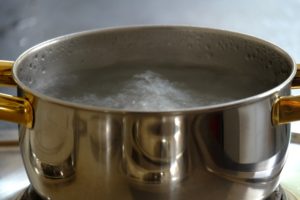Solutions for Controlling Indoor Home Humidity
 Each of us face a plethora of risks to our health every day. Some of these risks are unseen to the human eye, such as environmental pollutants and too-low (or too high) humidity levels. To optimize indoor air quality in your home and at your business, it must be fresh, clean and have the proper humidity levels. Since the Environmental Protection Agency (EPA) lists indoor air quality among its top environmental health threats, we need to find a balance for home humidity.
Each of us face a plethora of risks to our health every day. Some of these risks are unseen to the human eye, such as environmental pollutants and too-low (or too high) humidity levels. To optimize indoor air quality in your home and at your business, it must be fresh, clean and have the proper humidity levels. Since the Environmental Protection Agency (EPA) lists indoor air quality among its top environmental health threats, we need to find a balance for home humidity.
What is Relative Humidity?
Contents
Relative humidity (RH) is the amount of water vapor in the air compared to the maximum amount there could possibly be at that temperature. This is written as a percentage. On a soggy, summer day, for example, the relative humidity is likely going to be around 90 percent; on a windy, winter day, it’s more likely to be around 60 percent.
Cold air isn’t able to hold very much water vapor. In fact, the colder the air, the drier it is. That means that the chilly New Jersey winter air making its way into your house through leaks or ventilation fans is dry; heating systems can lower the level of home humidity even more, making your indoor environment too dry.
Optimal Indoor Home Humidity Levels
Research indicates that the ideal relative humidity for health and home comfort of about 40-50% is desirable. Keeping the air that moist over the course of a winter is more than most New Jersey homes can handle.
The RH in a home changes with the seasons and climate. If your home is 70 degrees inside and the temperature is under 20-40 degrees outside, you should consider keeping the humidity under 40 percent. For every 10-degree reduction in the outside temperature below 20 degrees, the maximum humidity level indoors should decrease by 5 percent.
The goal is to maintain indoor humidity at a level that isn’t too low as to cause problems like nosebleeds, but also that’s not too high that it creates moisture problems, like mold. You’ll need to measure it to find out.
Measuring Indoor Home Humidity
Measuring relative humidity is relatively simple with a hygrometer which is available at most hardware and home stores. When RH levels drop, it can make a home feel a lot cooler than it actually is. This means your furnace or heat pump will have to work a lot harder than it needs to.
You’ll start to notice other tell-tale signs of low humidity. Such as static electricity, dry skin, nose bleeds, cracked lips, scratchy throats, itchy scalp, and more. And because the mucous membranes in your nose and throat dry out, it can increase your susceptibility to colds and respiratory illnesses as well.
In your home, low humidity levels can damage furniture, electronics and woodwork. You may start to notice hardwood floors separating, wallpaper peeling, molding gaps, and even a piano that goes out of tune.
Solutions for Low Indoor Home Humidity
- Slow the infiltration of the cold, dry air by caulking windows and sealing leaks
- Install a whole-house humidifier or portable room humidifiers
- Keep the thermostat between 71 and 77 degrees
- Boil water on the stove with the lids off
- Keep household plants
- Line dry clothes
Balance Indoor Home Humidity
On the other hand, with humidity levels that are too high, you’ll start to notice water or ice on your windows. This can also be a big problem. If it’s collecting on the windows, it’s also likely to be collecting (unseen) in the walls and attic cavities. A few seasons of that could result in rotting building materials and mold. This would lead to high-cost repairs and high-risk health risks.
Balance is important.
Point Bay cares about your home comfort. And our service technicians are available 24/7 for all of your heating emergencies. Call us at 732-349-5059.
